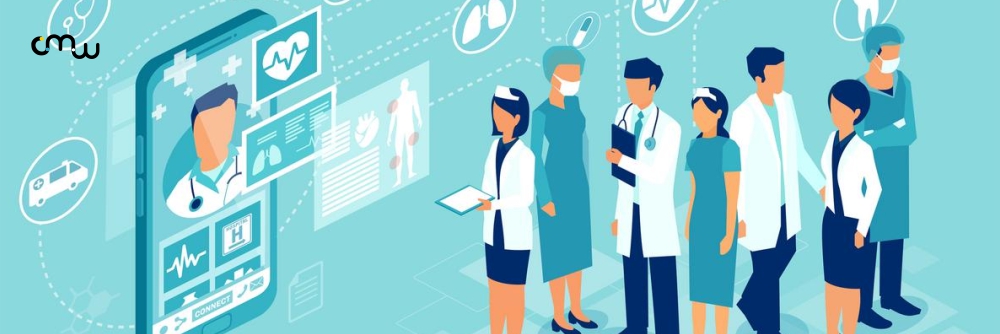Healthcare is at a crossroads. One where traditional methods of patient care and interaction with patients are being replaced by digital technology, which provides more opportunities for hospitals and health systems to personalize their services and improve the overall experience. In fact, patient expectations are changing because of this increased use of technology—and the pressure is on providers to offer something better than what other organizations can provide.
What is data-driven healthcare marketing?
Data-driven healthcare marketing is a way of using the data you have to grow your business. It's about understanding your customers and where they shop so that you can target them with relevant messages at the right time and place.
Data-driven healthcare marketing helps you:
- Increase conversions on your website or in-store sales;
- Improve patient outcomes by identifying high-value patients;
- Reduce costs by improving efficiency across departments (e.g., sales and marketing).
How can hospitals use data to personalize the patient journey?
You can use data to create personalized experiences for your patients. In fact, this is one of the most significant benefits of using analytics: it allows you to understand who your audience is and how they behave so that you can personalize their experience accordingly. For example, if a patient has come into the emergency room before with a particular health issue and has responded well to treatment, then it makes sense for them not only to receive information about what happened during their last visit but also to be given recommendations on how they might improve their overall health moving forward.
For hospitals looking to improve online presence and patient engagement: Data helps businesses understand what customers want from them (and where they're coming from), which helps inform decisions around content creation and marketing strategies. It also provides insights into which channels are most effective at driving conversions--for example, an email campaign might get higher clickthrough rates than social media ads because people trust emails more than advertisements on Facebook or Instagram (at least right now).
What does personalized healthcare marketing look like in practice?
In practice, personalized healthcare marketing is based on data and technology. It helps you understand your audience so that you can create personalized experiences for them. You can also use it to improve customer experiences and patient outcomes.
The first step in developing a personalized healthcare marketing strategy is understanding the needs of your target market--this means collecting information about them through surveys, focus groups, or other methods of research. Once you've gathered this data about what matters most to people who have similar medical conditions as those being treated by your hospital (or clinic), then it's time for analysis: Which factors make up an ideal patient experience? How do we motivate patients toward better health behaviors? What motivates people when it comes time for treatment decisions?
How can hospital and health system marketers adapt to this changing industry?
- Adapt to changing technology. Digital marketing is rapidly evolving, and it's essential to stay on top of the latest trends. For example, marketers will need to be prepared for voice search and other emerging channels that don't require typing or clicking.
- Adapt to changing consumer behavior. Patients are increasingly turning online for medical information in addition to traditional research methods like talking with their doctor or nurse practitioner (NP). In fact, over half of Americans have used an online resource such as WebMD or Mayo Clinic before seeing a physician--and many of these patients have then gone on to schedule an appointment with that doctor based on what they learned online.
- Adapt your business model in response to changes in regulations affecting healthcare providers.* This includes complying with HIPAA regulations surrounding patient privacy, ensuring compliance with state laws regarding patient consent forms, and knowing which types of businesses fall under federal regulation versus state oversight.
- Work toward adapting your organization's culture so that everyone understands how important these efforts are for helping patients get better outcomes at lower costs while protecting our workforce from burnout by helping them work smarter rather than harder!
Modern healthcare marketing focuses on patient-centric strategies and technology.
Modern healthcare marketing focuses on patient-centric strategies and technology. As the healthcare industry continues to evolve, it's essential to understand the role of marketing in creating a brand that resonates with patients.
Healthcare marketers need to be skilled at building relationships with their audiences -- not just through traditional advertising channels (like TV commercials) but also through digital channels like social media and mobile apps. And this means understanding what matters most to patients: their needs, interests, goals, and desires.
To do this well requires an understanding of your target audience -- in other words, what makes them unique? This might include things like age group or gender; geographic location; health conditions they may suffer from; lifestyle choices such as smoking habits or diet; family size & structure etc.
Data-driven decisions improve customer experiences across all industries.
Data-driven decisions improve customer experiences across all industries. The importance of understanding the needs of your customers cannot be overstated, and data can help you find out what they want. This information can then be used to improve your online presence and create personalized experiences for each individual user.
Understand your audience using data.
The first step in understanding your audience is to get as much data on them as you can. This includes:
- Demographics (age, gender, and income level)
- Psychographics (personality traits and interests)
- Behaviors (habits, lifestyle choices)
Once you have this information, use it to create a profile of the people who make up your core target market. Then look at how they differ from other potential customers. For example: If I'm selling health insurance policies for families with young children, I know that my ideal customer will likely be married with kids between 6-12 years old who live in urban areas with an average household income of around $120k per year.
Use data to improve your online presence.
Data is the key to a successful digital marketing strategy. It allows you to understand your audience and deliver content that resonates with them, resulting in more leads and sales.
Use data to improve your online presence:
- Use Google Analytics to track which pages on your website are most popular and what keywords visitors use when searching for information about your products or services. This will help determine where the most valuable traffic comes from and how people are finding out about you online so that you can focus on driving more of those visitors back into the sales funnel through targeted optimization efforts (e.g., search engine optimization).
Use data to create personalized experiences.
The customer experience is king. In the healthcare industry, it's more than just the customer service that matters--it's about understanding what the customer wants and delivering it.
That means creating personalized experiences for each patient or potential patient, but what does it mean to be "personalized"? Personalization isn't just about using someone's name when they walk through your doors--it's understanding their pain points and meeting them where they're at in their journey with you as an organization. If a patient has been waiting to see a doctor for months but needs medication today, they may not be interested in hearing about how great your new office space looks or how many awards you've won recently (even if those things are true). Instead, focus on helping them solve their immediate problem by providing quick access to care so that everyone can move forward with ease.
By using data, your team can make sure it is spending time on the right initiatives.
The healthcare industry is in the midst of a data revolution. Data is the new oil and can be used to build better organizations, improve patient experiences, and increase marketing efficiency. It also provides insights into how you can improve patient outcomes by using analytics to identify best practices that work for your organization.
This shift has led to many organizations investing heavily in data collection and analysis tools like Hadoop or Tableau so they can make more informed decisions about their patient's needs as well as their marketing efforts.
Here are some of the ways that healthcare organizations can use data to improve patient experiences, drive revenue growth and increase engagement.
- Use data to improve your online presence. Healthcare organizations can use data to improve their online presence by understanding what visitors are looking for and how they want to interact with the brand. This will allow you to create a personalized experience that connects with customers on an individual level, resulting in higher engagement rates and increased traffic.
- Use data to create personalized experiences. Personalized experiences allow healthcare organizations to provide patients with relevant information based on their interests so that they feel valued as individuals rather than just another patient number on a spreadsheet somewhere (or, worse yet, an insurance claim). Patients also appreciate being able to access information about their care options through easy-to-use forms or apps -- mainly when those options include cost estimates or payment plans!
As you can see, there are a lot of ways to use data-driven healthcare marketing. By using this approach, you can improve the patient journey and create more personalized experiences for your audience. You'll also be able to make better decisions about what initiatives are most important in order to reach your goals.









